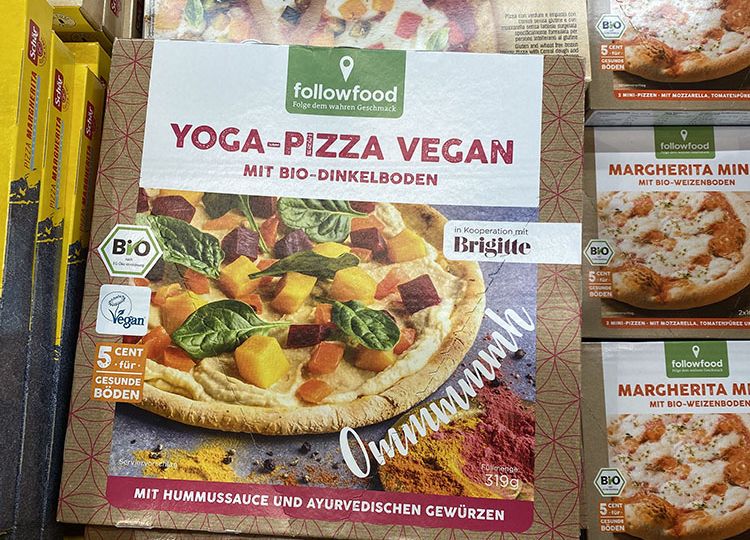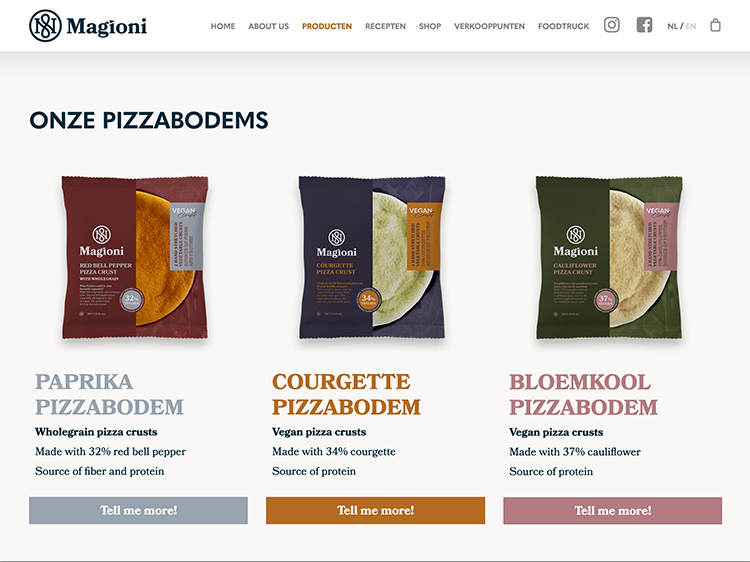
The pizza market is growing geographically. At the same time, food trends and nutritional profiles are changing on the traditional markets in North America and Europe.
October is known as “National Pizza Month” in the USA. It began in 1984 and was created by Gerry Durnell, pizzeria owner and the publisher of Pizza Today magazine. He selected October because it was the month that the first issue of the magazine was published. And today that tradition continues with late autumn considered the time for product innovations and real marketing fireworks.
Statistically calculated, every American eats around 40 pizzas per year, which makes the country the world champion in this discipline per capita. The second largest market is Europe, where, according to statistics, the Norwegians take first place in pizza consumption, followed by the British. Third place belongs to Germany with 10 pizzas per capita per year. The Asian markets, particularly China, India, Bangladesh and the Philippines, are still in the process of being established. Using a dynamic approach, distribution channels through supermarkets and out-of-home markets are growing.
Both major sales markets – North America as well as Europe – show growing fragmentation on the supply side. In addition to the simple and inexpensive frozen pizzas from the supermarket or discount store, there are numerous restaurant chains and delivery services that specialize in pizza. More and more supermarkets are also offering fresh pizzas on their refrigerated shelves, with or without toppings, which are often produced in their own kitchens or in store bakeries.
The out-of-home market is currently growing faster than sales in the supermarket. In Germany, for example, pizza sales in supermarkets in 2019 grew by 5.7% in volume compared to the previous year, and by 6.6% in the out-of-home market. However, the out-of-home market has not even reached 10% of the volume that is sold in retail freezers. The takeaway pizza market in Germany owes its stronger growth not least to the intensive market cultivation by Domino’s. The group only came to Germany ten years ago and, after taking over some competitors, is now the number 1 with more than 330 stores.
Frozen pizza has long been considered an ‘iconic dish’ for young people and those with low incomes because it offers a complete meal for very little money, is easy to prepare and can be stored for a long time. It has also been included in the menus across generations and income levels.
With the expansion of the target groups, the demands on manufacturers/suppliers have also grown. Restaurants try to differentiate themselves from pure delivery services through changing or even customizable product offers and menu packages. Since pizza deliveries are now offered on all possible delivery platforms, pure pizza delivery companies have increasingly had to prove their competitiveness by fulfilling the wishes of customers faster and more conveniently.
Rising social standards, personnel and rental costs in the metropolitan areas ensure that chains that rely on the supply of decentralized bases with fresh dough from a central production facility promote the automation of production and logistics. Digitizing ordering and logistics and thus making them faster and cheaper is now also on the investment plan for all delivery services. For example, Domino’s began testing fully automated, unmanned delivery vehicles in the United States as early as 2017. The latest development, a robot with the imaginative name R2, can even change the side of the street without colliding with the flow of other road users. It also manages to navigate within apartment complexes to the door of the respective customer, clearly demonstrating a superiority over a drone.
The production of frozen pizzas for retail is largely automated, depending on the output quantities. Here, automation drivers are more storage and distribution, especially when, as is often the case in the USA, dough production and decoration are carried out by different companies, or copackers are used for new product developments during the test phase.


Website Magioni
New nutritional styles – new pizzas
The most important changes currently relate to the pizza itself and drivers for this are on the one hand the attempt by manufacturers to set themselves apart from the competition with specialties, and on the other hand the increasingly differentiated nutritional styles of consumers. The first category includes pizzas with a filled crust, which are primarily sold in the USA, but are considered to be a niche market there.
The development of frozen pizzas with dough that can still rise when baked in the oven was much more successful. But having started as a premium product, it is now a variant that barely achieves higher prices in the supermarkets. In the USA in particular, this variety is only of limited importance. Many US pizza fans love deep-pan pizzas, which are very doughy in comparison. These are better baked from frozen as this large amount of dough would simply rise too quickly and too strongly in the oven.
The new ‘premium’ is therefore defined by the consumer profile and this includes, amongst other things the desire for more craftsmanship, and regionality of the ingredients, etc. These requirements are met by supermarkets that offer refrigerated fresh, often seasonally filled pizzas in their own restaurants or bakeries. A good example of how this desire also initiates movement in the frozen pizza market is the success of Franko Fresco GmbH from Geretsried in Bavaria. Launched in 2016, it markets pizzas under the name Gustavo Gusto, “as if fresh from the pizzeria, spread out by hand and topped with lactose-free mozzarella”. There are six varieties on the market, available from food retailers in Austria, Switzerland and Germany, but also now from Amazon’s brands, Fresh and Prime. The newcomer is now considered a winner extraordinaire!
The second variant of the new premium term is aimed at the nutritional style of the consumer, whether vegetarian, vegan, paleo, keto, lactose-free, low-salt, gluten-free or other. It’s true that in the past, pizzas, which were aimed at such a sophisticated, discerning clientele, couldn’t get around a list of ingredients that exploded with additives. However, a new trend emerged some time ago – the use of vegetables as raw materials for the dough. In the USA, the vegetable processor Green Giant, which belongs to B&G Foods, sells frozen pizza bases at Walmart, the flour content of which has been reduced in favor of cauliflower, spaghetti squash, zucchini or asparagus. Green Giant advertises, for example, that such a cauliflower pizza base consists of 80% cauliflower and that the calorie content is halved.

Gustavo Gusto Pizza
Similar pizza bases are also on the market in Europe. The Dutch supermarket chain Jumbo sells pizza bases from Magioni, a company from Amsterdam that promotes its pizzas as ‘guilt-free’ and therefore people eating them don’t have to have a guilty conscience. The range includes pizza bases made from cauliflower, zucchini (courgettes) and red peppers. The proportion is between 32 and 37%. Unfortunately, the company is currently not processing any press inquiries, so it remains unclear whether Magioni is still a producer or whether this task is with a copacker. In Germany, it is said from usually well-informed circles, that similar products will come onto the market in the foreseeable future. This is because the pizza bases made from vegetables have a big advantage. The list of ingredients is short and easy to understand, and from vegetables to healthy food is a simple and short way for consumers.
The German company Lizza GmbH from Neu Isenburg near Frankfurt offers a slightly different version. Their pizza bases consist primarily of gold flaxseed flour, soy flour, water, psyllium husk powder and sea salt and can therefore be advertised as gluten-free, vegan, low-carb, keto and of organic quality on top of that.


